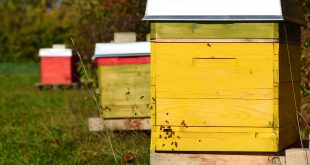Explore the important aspect of safety in beekeeping with our insightful article. Focusing on the potential risks and concerns beekeeping poses to neighbors, the article provides a balanced view of how beekeeping activities can impact surrounding communities. It offers valuable information for both aspiring and experienced beekeepers on maintaining safety and harmony in residential areas.
Read More »Personalize Your Beehives with Branding Irons
Beehives and their components are investments that cost beekeepers considerable amounts of money. Many beekeepers have had cases of theft of their beehives and have resorted to making some markings on their beehives and other methods of deterring and tracking thieves. The technology minded beekeepers may go for RFID and …
Read More »Bee Smokers: Introduction and Safe Usage Guide
Any serious beekeeper understands the tremendous benefits associated with the bee smoker and cannot afford to survive without one. The tool has a rich history and has undergone various modifications and you can now get one that is near perfect. There are various types of bee smokers out there and thus it is pretty easy to get the right one for your business or hobby. In this article, we'll discuss the best bee smokers out there for your money.
Read More »Highly Recommended Online Beekeeping Suppliers
There are many manufacturers and suppliers of beekeeping equipment out there. Below is a compilation of the top 5 best beekeeping suppliers on the market today.
Read More »Selling Honey – All You Need to Know
Step into the world of honey sales with our insightful article. Ideal for beekeepers looking to venture into the market, it covers key aspects of selling honey, from understanding market demands to setting the right price. The guide also touches on marketing strategies, legal considerations, and building customer relationships. Whether you're a small-scale local seller or aiming for larger markets, this article provides valuable tips to help you succeed in the competitive world of honey sales.
Read More » BeeKeepClub Resources and Guides for Beekeepers
BeeKeepClub Resources and Guides for Beekeepers





